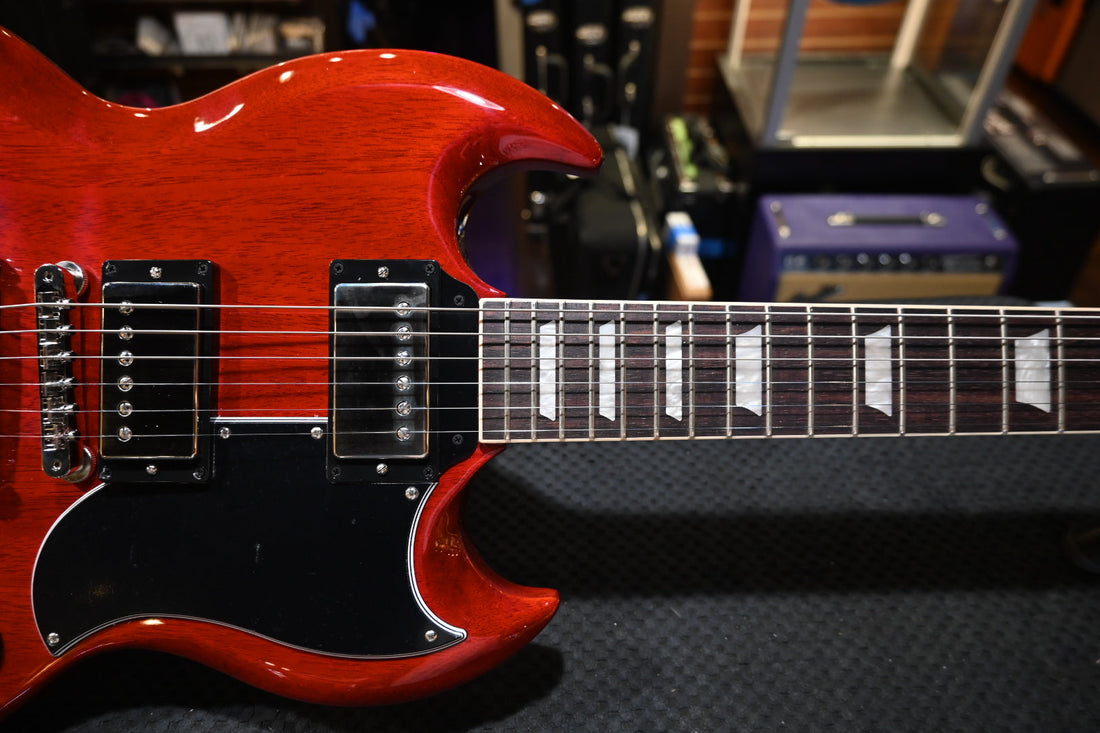Walk into any guitar store and you'll face the same question: Why does that guitar cost five times more than this one? They both have six strings, wood bodies, and make music when you strum them. The difference seems arbitrary until you understand the hidden economics of guitar ownership.
The truth is, buying a $500 guitar might cost you more over five years than purchasing a $2,500 instrument upfront. Here's the math that changes everything.
The Total Cost of Ownership Revolution
Most guitar buyers think about sticker price, not lifetime cost. This backwards approach explains why so many players end up frustrated, broke, or both.
Take a typical scenario: You buy a $500 import guitar thinking you've saved money. Within six months, you're paying for your first professional setup because the guitar won't stay in tune. That's $100. The electronics start crackling after eighteen months - another $200 for pickup replacement. By year three, the frets need work because the cheap metal wore down faster than expected. Add $300.
Your "budget" guitar just cost $1,100, and it still doesn't play as well as a quality instrument would on day one.
Meanwhile, your friend bought a Gibson Les Paul Studio for $2,200. After three years, she's spent maybe $150 on routine maintenance. Her guitar not only plays better but holds 65-70% of its original value if she decides to sell.
The premium guitar costs $550 per year of ownership. The budget guitar costs $367 annually but delivers a vastly inferior playing experience.
Where Your Money Actually Goes
Understanding guitar construction reveals why price differences exist and why they matter for your wallet.
Electronics and Hardware
Cheap guitars use ceramic pickups that sound harsh and break easily. Quality instruments feature PRS proprietary pickups or Seymour Duncan designs that cost more to manufacture but last decades without degradation.
The difference shows up in repair bills. Budget electronics fail within 2-3 years, while premium components often outlast the guitar itself.
Wood Selection and Seasoning
A $500 guitar might use plantation-grown wood that's kiln-dried in weeks. Premium instruments use air-dried, quarter-sawn timber aged for years. This isn't marketing fluff - proper wood preparation prevents cracking, warping, and tuning instability.
When a budget guitar's neck warps after two summers, you're looking at $200-400 in repair costs. Quality wood construction prevents these problems entirely.
Manufacturing Precision
Hand-filed frets versus machine-pressed ones. Bone nuts versus plastic. Nitrocellulose finishes versus polyurethane. Each upgrade costs more initially but saves money long-term through reduced maintenance needs and better resale value.
The Resale Value Reality Check
Here's where the math gets interesting. Premium guitars from established brands hold their value remarkably well, while budget instruments crater immediately.
A three-year-old Fender American Professional that cost $1,800 new typically sells for $1,200-1,300 used. That's 72% value retention.
Compare that to a $500 import guitar worth maybe $200 after three years - if you can find a buyer.
This difference transforms the ownership equation. The premium guitar's true cost becomes the difference between purchase price and resale value, not the full purchase price.
Real Example:
- Buy: Fender American Professional for $1,800
- Sell after 5 years: $1,100
- True ownership cost: $700 ($140 per year)
Versus:
- Buy: Import guitar for $500
- Sell after 5 years: $150
- True ownership cost: $350 ($70 per year)
The premium guitar costs twice as much per year but delivers an exponentially better playing experience, making it the superior value proposition for anyone serious about playing.
The Professional Advantage
Here's what guitar teachers don't always tell parents: instrument quality directly correlates with student success rates.
Students playing quality instruments practice more, progress faster, and stick with lessons longer. The physical ease of playing a well-set-up, properly intonated guitar removes barriers that cause beginners to quit.
A Taylor electric feels responsive and inspiring to play. A budget guitar fights you every step of the way, making even simple chords feel difficult.
This isn't about snobbery - it's about removing unnecessary obstacles from an already challenging learning process.
The Hidden Maintenance Math
Budget guitars require constant attention. The savings evaporate quickly when you factor in:
Setup Frequency: Cheap guitars need professional setup every 4-6 months versus annually for quality instruments. That's an extra $75-100 per year in maintenance costs.
Component Replacement: Budget tuning machines slip, cheap bridges crack, and electronics fail prematurely. These aren't one-time fixes but recurring expenses that accumulate over years.
Playability Issues: Poor fretwork and inconsistent neck relief make budget guitars harder to play, leading to slower progress and potential repetitive stress injuries.
Premium guitars like PRS's use components designed to last decades, not years.
When Budget Makes Sense (And When It Doesn't)
Budget guitars serve specific purposes. For occasional players, children under 10, or situations where the instrument might be damaged, a less expensive option could make sense.
But for anyone planning to play regularly, the math favors quality.
The break-even point typically occurs around 18 months of ownership. After that, the premium guitar's superior durability, playability, and resale value make it the more economical choice.
Epiphone represents an interesting middle ground - better construction than imports but not quite reaching Gibson's standards. These guitars work well for players who need better quality than budget allows but can't stretch to premium pricing.
The Investment Perspective
While guitars shouldn't be purchased purely as investments, quality instruments from established brands do protect your money better than budget alternatives.
Gibson, Fender, and PRS guitars from the 1990s and 2000s now sell for more than their original retail prices in many cases. Budget guitars from the same era are essentially worthless.
This difference matters when you want to upgrade, gift the guitar to someone else, or simply recoup some of your investment.
Making the Smart Choice
The guitar value equation isn't really about $500 versus $2,500. It's about understanding total cost of ownership and making decisions that align with your playing goals.
If you're serious about guitar, buying quality upfront saves money, frustration, and time. The premium pays for itself through reduced maintenance, better playability, and superior resale value.
For players ready to make that commitment, instruments from Gibson, Fender, PRS, and Taylor represent smart investments in both your music and your wallet.
The question isn't whether you can afford a quality guitar. It's whether you can afford not to buy one.
Ready to experience the difference quality makes? Explore Danville Music's curated selection of premium guitars and discover why investing in excellence pays dividends for years to come.
Trending Posts
Recent Posts
Best Guitar Amps Under $1000 for 2025
December 09, 2025
Best Guitars Under $500: Expert Picks for 2025
November 20, 2025


 Cameron Brochier
Cameron Brochier




